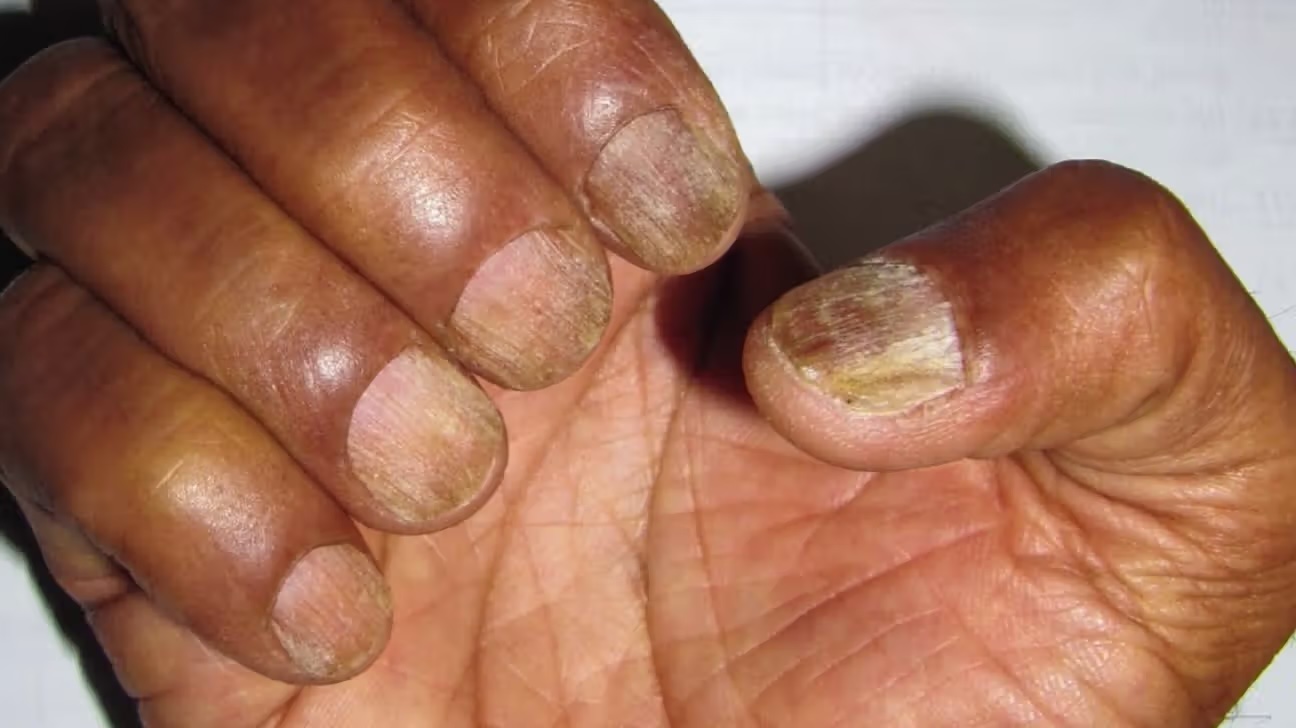
Polyposis Skin Pigmentation Alopecia Fingernail Changes might sound like a mouthful, but understanding it can be simpler than it seems. This condition involves a mix of symptoms affecting various parts of the body. Polyposis refers to the growth of multiple polyps, often in the digestive tract. Skin pigmentation changes can lead to unusual dark or light patches. Alopecia means hair loss, which can occur in patches or more extensively. Lastly, fingernail changes might include ridges, discoloration, or even nail loss. These symptoms together can signal underlying health issues that need attention. Let's dive into 25 intriguing facts about this complex condition to help you understand it better.
Key Takeaways:
- Polyposis Skin Pigmentation Alopecia Fingernail Changes is a complex condition involving polyps, skin pigmentation, hair loss, and fingernail abnormalities. Genetic factors, symptoms, and treatments play key roles in managing this condition.
- Genetic mutations, family history, and environmental factors can contribute to the development of Polyposis Skin Pigmentation Alopecia Fingernail Changes. Understanding the symptoms and seeking early diagnosis are crucial for effective management.
Understanding Polyposis Skin Pigmentation Alopecia Fingernail Changes
Polyposis Skin Pigmentation Alopecia Fingernail Changes is a complex medical condition. It involves multiple systems in the body, leading to a variety of symptoms. Here are some fascinating facts about this condition.
-
Polyposis refers to the development of numerous polyps, which are abnormal tissue growths, often found in the colon or gastrointestinal tract.
-
Skin pigmentation changes can include dark spots, light patches, or other alterations in skin color, often due to genetic factors or underlying health issues.
-
Alopecia is the medical term for hair loss, which can occur in patches or affect the entire scalp and body.
-
Fingernail changes might involve discoloration, ridges, or abnormal growth patterns, indicating potential systemic health problems.
Causes and Genetic Factors
Understanding the causes and genetic factors behind this condition can provide insight into its complexity.
-
Genetic mutations are often responsible for the development of polyposis, particularly mutations in the APC gene.
-
Inherited syndromes such as Peutz-Jeghers syndrome and Gardner syndrome can lead to polyposis and associated symptoms.
-
Environmental factors like diet, lifestyle, and exposure to certain chemicals can influence the severity and progression of the condition.
-
Family history plays a significant role, as individuals with relatives who have the condition are at higher risk.
Symptoms and Diagnosis
Recognizing the symptoms and understanding the diagnostic process is crucial for managing the condition effectively.
-
Gastrointestinal symptoms such as abdominal pain, bleeding, and changes in bowel habits are common in polyposis.
-
Skin pigmentation changes might appear as early as childhood, often around the mouth, eyes, and fingers.
-
Alopecia areata is a specific type of hair loss associated with this condition, characterized by sudden, round patches of baldness.
-
Fingernail abnormalities can include pitting, splitting, or spoon-shaped nails, often signaling underlying health issues.
-
Endoscopic examinations are essential for diagnosing polyps in the gastrointestinal tract.
-
Biopsies of polyps and skin lesions help determine the nature and potential malignancy of the growths.
Treatment and Management
Effective treatment and management strategies can improve the quality of life for those affected by this condition.
-
Surgical removal of polyps is often necessary to prevent complications like bleeding or cancer.
-
Medications such as anti-inflammatory drugs can help manage symptoms and reduce polyp growth.
-
Regular screenings are crucial for early detection and management of polyps and associated conditions.
-
Nutritional support can play a role in managing symptoms and improving overall health.
-
Topical treatments may be used to address skin pigmentation changes and alopecia.
-
Psychological support is important, as dealing with a chronic condition can be emotionally challenging.
Research and Future Directions
Ongoing research is essential for understanding and improving the treatment of this complex condition.
-
Genetic research is uncovering new mutations and pathways involved in the development of polyposis and related symptoms.
-
Clinical trials are testing new medications and therapies to improve management and outcomes.
-
Patient registries help track the long-term outcomes and effectiveness of different treatments.
-
Interdisciplinary approaches involving gastroenterologists, dermatologists, and geneticists are improving patient care.
-
Public awareness and education about the condition can lead to earlier diagnosis and better management strategies.
Final Thoughts on Polyposis Skin Pigmentation Alopecia Fingernail Changes
Polyposis, skin pigmentation, alopecia, and fingernail changes are more than just medical terms. They represent a complex interplay of symptoms that can significantly impact someone's life. Understanding these conditions helps in early detection and better management. Knowledge is power, and being aware of these symptoms can lead to timely medical advice and treatment.
Remember, each symptom might seem unrelated, but together they can paint a clearer picture of underlying health issues. Always consult healthcare professionals for accurate diagnosis and treatment plans. Stay informed, stay proactive, and take charge of your health.
By recognizing these signs, you can make informed decisions and seek appropriate care. Your health is your wealth, so keep learning and stay vigilant.
Frequently Asked Questions
Was this page helpful?
Our commitment to delivering trustworthy and engaging content is at the heart of what we do. Each fact on our site is contributed by real users like you, bringing a wealth of diverse insights and information. To ensure the highest standards of accuracy and reliability, our dedicated editors meticulously review each submission. This process guarantees that the facts we share are not only fascinating but also credible. Trust in our commitment to quality and authenticity as you explore and learn with us.
